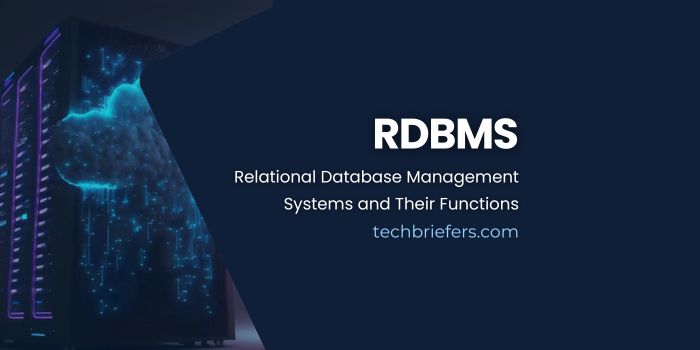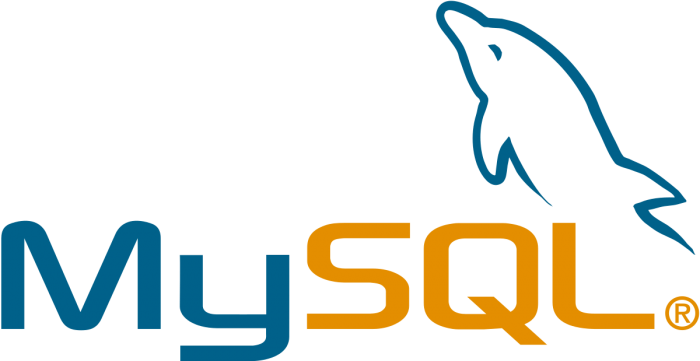Relational Database Management Systems (RDBMS) and Their Functions

Essentially, an RDBMS, or Relational Database Management System, is a crucial component of a database. This system is used across many types of applications. An RDBMS uses the SQL programming language to execute various commands for storing, managing, and accessing a database. These commands operate on tables made up of interconnected rows and columns. Each table will have a relationship represented by a key, which identifies each row within the table.
What is a Relational Database Management System?
As technology advances, RDBMSs are expected to continue to improve due to their ability to simplify database access and management. Furthermore, these database systems are built using code, ensuring minimal human intervention in processing. For your information, a key feature of RDBMSs is data visualization. This feature facilitates understanding between tables within a database by providing clear diagrams or schematics.
Characteristics of RDBMS
In practice, RDBMS involves several special characteristics as follows.
- Table structure: Typically, data storage will be in the form of a table containing rows and columns.
- Relationships between tables: Can be implemented using primary keys and foreign keys.
- Data integrity: Able to ensure data validity through constraints.
- Data manipulation: Supports various important operations such as insert, delete, update, and select with SQL.
RDBMS Functions
Relational Database Management Systems play a crucial role in processing various data. Their function involves four main aspects: data storage, processing, manipulation, and analysis. So, what are the functions of these database systems? Consider the following explanation.
Data Storage
An RDBMS can store data systematically. This data can be in the form of tables, text, numbers, dates, images, videos, and various other types according to the RDBMS’s capabilities.
Data Management
An RDBMS can organize data through various management mechanisms such as structures, rules, and constraints. Some of these structures include table names, data types, columns, and keys.
Existing rules can ensure integrity by maintaining consistency and accuracy. Meanwhile, constraints are needed to regulate access rights, determining who can view, delete, and modify data.
Data analysis
Relational Database Management Systems can support data analysis through queries. This allows users to obtain specific information. With the help of SQL, users can combine, filter, sort, calculate, and even group data.
Also read: What is a Foreign Key? Functions and Examples in Databases
Benefits of RDBMS-Relational Database Management Systems
RDBMSs have a simple, easy-to-understand structure and don’t require overly complex data hierarchies. This makes data management simple and can be easily performed using SQL queries.
Apart from bringing the advantage of simple data processing, RDBMS also brings various benefits as follows.
- Ease of access: Relational databases allow for fast and efficient data access. They can even modify data, including merging related and relevant tables or data.
- High accuracy: Can display data in real time. This includes data type, size, and position, ensuring that data is stored and displayed with a high degree of accuracy.
- High flexibility: Relational Database Management Systems are designed to flexibly handle data growth. Even if the amount of data added is quite large, the system can store it without affecting performance.
- Guaranteed security: The system’s SQL-based architecture provides crucial assurance regarding the minimization of the potential for theft or unauthorized use. Only authorized users can access the data. Furthermore, a database administrator is required to maintain data security to prevent data leaks or unauthorized access.
Also read: Database Management System (DBMS)
How RDBMS Works
The first step in how an RDBMS works begins with receiving a query request from a user, either through an application, program, or connected interface. The query itself can be sent locally or over a network using the required SQL format.
So, how does an RDBMS work after receiving a query request? The stages of how a Relational Database Management System works include query validation and results. For more details, see the following discussion.
Query Validation
The system will verify whether the query is valid based on two things: SQL syntax and semantic rules. If it doesn’t, the relational database will send an error message to the user, preventing the process from proceeding to the next step.
Query Execution
The system can execute valid queries by retrieving data from the relevant database. Furthermore, it can also perform various data operations, such as adding, modifying, deleting, or calculating data, according to the query instructions.
Returning Results
Finally, the output will be sent back to the user in the requested format. This output can include data, confirmation messages, errors, or warnings, displayed in various formats, including tables, graphs, reports, and other visuals.
Also Read: 7 Types of Database Keys and Their Functions
Examples of RDBMS Implementation
To date, Relational Database Management Systems (RDBMSs) have been widely used for various purposes. Here’s an example of an RDBMS implementation that’s already widely used.
Oracle

This database system offers a variety of important features such as partitioning, clustering, replication, disaster recovery, high-level security, and analytical capabilities. The Oracle system itself supports a variety of data formats, such as spatial, multimedia, XML, and JSON.
MySQL

Platforms like MySQL are often the primary choice for developing various web applications, especially those based on PHP. This platform is renowned for its fast performance and support for various data types, such as text, numbers, dates, images, and blobs.
Microsoft SQL Server
Microsoft SQL Server is equipped with comprehensive features to handle a variety of complex objects, including transactions, stored procedures, functions, triggers, and indexes. Note: SQL Server is primarily available for Windows.
PostgreSQL
The PostgreSQL Relational Database Management System (RDBMS) offers stability, reliability, and the ability to handle large amounts of data. This platform offers advanced features, including support for transactions, stored procedures, and complex data types. Interestingly, PostgreSQL is compatible with a wide range of operating systems, making it a highly recommended platform.
SQLite
Essentially, platforms like SQLite don’t require a dedicated server. SQLite itself can store data in a single file that can be accessed by multiple applications. Typically, platforms like SQLite are widely used for popular applications, including mobile, desktop, and embedded applications. Furthermore, this platform provides excellent support for Windows, Linux, Unix, macOS, Android, and iOS.
Also Read: SQL – Structured Query Language: Basics of SQL
Is the Relational Database Model the Right Solution?
The Relational Database Model uses the principles of relational algebra, with a data structure consisting of tables consisting of rows and columns. Each row has a primary key as a unique identifier, and tables are connected through foreign keys. This model supports data operations such as INSERT, UPDATE, DELETE, and SELECT using SQL. One of its advantages is ensuring data accuracy by preventing row duplication, thereby reducing the risk of information errors.
A Relational Database Management System (RDBMS) is an efficient solution for companies in managing data. With an RDBMS, data storage, access, and management are simplified, supporting fast and accurate decision-making.
Its uses include various applications such as CRM, CMS, OMS, inventory management, and financial analysis. RDBMS helps companies track transactions, analyze sales, and optimize overall business operations.
Also Read: What is Data Fetching in Modern Applications and How It Works
Closing
An RDBMS (Relational Database Management System) is a crucial component of a database and is useful for various applications. This system uses the SQL programming language to execute commands for storing, managing, and accessing databases. RDBMS, or Relational Database Management System, has been widely implemented in various systems, such as Oracle, MySQL, Microsoft SQL Server, PostgreSQL, and SQLite. The importance of implementing an RDBMS is crucial for understanding its definition, characteristics, functions, benefits, operation, and application in various concrete applications.

Leave a Reply